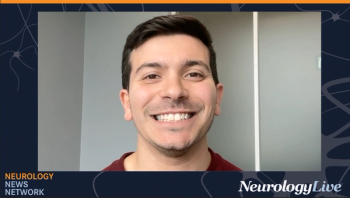
Virtual Reality in Neurology
With the help of virtual reality, treatment of psychiatric and neurological conditions may evolve beyond traditional approaches.
While most of us think of virtual reality in terms of entertainment, this technology has long crossed a blurry border with education and also spread into other fields. Today, it is used in medical education, rehabilitation, and therapy, with various degrees of success.
Virtual reality has a large role in medical education by providing means of simulating real-life situations. Such immersive educational experience complements real-life experience with patients. It is offered in centers across the country, such as the new iEXCEL center at the University of Nebraska Medical Center, to healthcare students and practitioners. Virtual reality-based applications have been developed for radiotherapy (VERTTM), surgery (Surgical Simulation Platform), and anatomy (Anatomage).
In neurology, virtual reality is often used in patient care, specifically, in stroke rehabilitation. A recent Cochrane review explores the role of virtual reality in rehabilitation after stroke. The authors compared virtual reality with an alternative intervention or no intervention in its ability to improve upper limb function and activity, gait and balance activity, global motor function, cognitive function, activity limitation, participation restriction, and quality of life.1 Additional outcomes included voxels or regions of interest identified via imaging and adverse events. Feasibility of virtual reality in this population was assessed from the standpoint of patient eligibility criteria and recruitment.
The review revealed a statistically significant effect of virtual reality-based rehabilitation on arm function (standardized mean difference (SMD), 0.28; 95% confidence interval (CI), 0.08-0.49) and the activities of daily living (SMD, 0.43; 95% CI, 0.18-0.69). Grip strength, gait speed, or global motor function did not differ significantly, and results for cognitive function, participation restriction, quality of life, or imaging studies could not be analyzed. Adverse events were rare and relatively mild. Still, the quality of this evidence is low, eligibility rates were only 26%, and the most therapeutically relevant characteristics of virtual reality remain unknown. This is perhaps the most substantial obstacle to the success of this approach: if it is unclear what makes virtual reality effective, it is impossible to improve the efficacy of this approach.
With the help of virtual reality, treatment of psychiatric and neurological conditions, including attention-deficit/hyperactivity disorder (ADHD), autism, depression, and traumatic brain injury, may evolve beyond traditional approaches. One of the recent steps in this evolution is the Project: EVO™ platform. Termed “cognitive therapeutic” by its developer, Akili Interactive, this video game is currently being tested in a clinical study as a therapy for pediatric ADHD. If successful, this study would earn virtual reality-based games extra credit; meanwhile, skepticism about therapeutic potential of games remains high in the neuroscience research community. An ultimate test would be the process of US Food and Drug Administration approval, which may be the next logical step for this and other developers of games with therapeutic potential.
I am curious to see which of these aspects of medicine virtual reality will transform the most. What is your opinion?
1. Laver KE, et al.
Newsletter
Keep your finger on the pulse of neurology—subscribe to NeurologyLive for expert interviews, new data, and breakthrough treatment updates.































